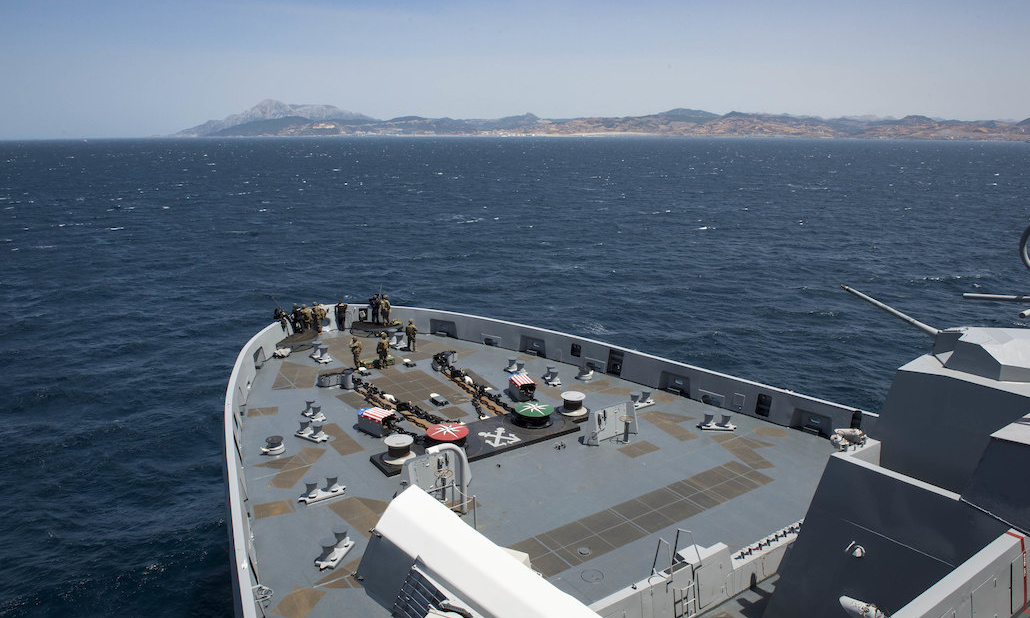
When British Royal Marines helped seize an oil tanker off the southern tip of Spain on Thursday, they opened up a legal wrangle that could drag on for months.
The Grace 1, a supertanker able to haul 2 million barrels of crude, was arrested in the early hours of July 4 because Gibraltarian authorities said they had grounds to believe it was going to breach European Union sanctions by delivering crude oil to Syria. The cargo came from Iran, which protested against the seizure.
With the vessel now sitting inside the Bay of Gibraltar, close to the shore of the British overseas territory, one question being asked is what will it take for the tanker to be released. There are — according to Anna Bradshaw, a partner at the law firm Peters & Peters, who specializes in sanctions — two obvious ways for that to happen.
Option 1 – Admit an Error
This option doesn’t seem likely. The government of Gibraltar could say that it made a mistake and that it doesn’t think the vessel was in fact breaching EU sanctions. That seems a little improbable, given special forces were flown in from the U.K. to carry out the seizure, and the subsequent international attention it garnered.
Though that option could see the ship leave the port and sail away, there’s no guarantee that the U.S. wouldn’t try to ensure that the vessel remained seized again as a result of its own sanctions, according to Bradshaw. In reality, since the U.S. has no such jurisdiction, it might struggle to do that, she said.
Alternatively, Iran could also successfully defend itself in the Gibraltarian legal system, allowing the vessel to depart.
Option 2 – Legal Wrangle
A more likely sequence of events would see the vessel or its cargo detained for a more prolonged period, Bradshaw says. A sequence of events has already been triggered, that could ultimately lead to the ship being released:
- 1) Once the vessel is detained, a court will need to extend the period it can be held for, which starts at 72 hours, and has now been extended to 14 days
- 2) After that time’s up, the period can be extended again to as long as 90 days
- 3) By then, the government can look to either legally seize the ship and its cargo — known as forfeiture — or possibly sell them; that would see the vessel back on the world’s oceans
All of this could still occur while the ship’s owners and managers answer charges of sanctions breaches. Again, that process is complicated and could be long, particularly given that it’s rare for EU sanctions breaches to have to be tried, and it’s equally rare for a supertanker of oil to be seized mid-transit. A long and wrangling court procedure could also mean that the sale or release of the vessel gets held up.
It’s also important to remember that Iran protested against the ship’s seizure, so there is likely to be a much wider political picture going on.
“EU asset freeze sanctions are so rarely enforced that you don’t really have much precedent to go on,†Bradshaw says. “It’s probably not going to be resolved in a hurry.â€
Source: Bloomberg
Photo used for illustration only, public domain, Author: Commander, U.S. Naval Forces Europe-Africa/U.S. 6th Fleet
Check out our other current stories!
- Shelf bags two years worth of work with Chevron for the Scepter
- Interpol “Red Notice†issued for the arrest of Pemex ex-CEO
- U.S. and Canada both down 4 for this week’s rig count
Rig Lynx was launched December 2017, our oil and gas news was viewed over 373,000 times in 2018 and our social networking application generated over 268,000 clicks in 2018. Our current foothold has rivaled the largest in the industry and we are just getting started.


